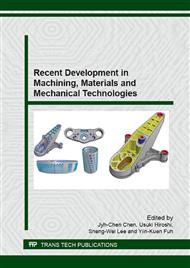p.63
p.68
p.74
p.80
p.86
p.92
p.101
p.107
p.113
Production Processes and Characteristics of Porous Alumina with Air Bubbles Introduced into Slurry
Abstract:
In this study, production processes for porous alumina, and the characteristics of the material, were investigated. Porous alumina was produced by a wet-shaping process in which air bubbles were introduced into the slurry. The feature of this production process is that many pores are produced by slip casting carried out using whipped slurry, where only the conditions of the slurry are adjusted. The advantage of this process is its simplicity. From the results, it is made clear that a green compact of porous alumina can be produced by changing the amount of solvent and binder, and also that a sintered compact of porous alumina can be produced by a low sintering temperature, such as 1473 K. The four point bending strength of porous alumina is about 515 MPa when the porosity is about 30 %. The excellent characteristics of the sintered compact of porous alumina are shown by the observation results of the fracture surface in this production process. The dense alumina body is sintered while maintaining the fine grains, and with the micro pores remaining in the grain boundary.
Info:
Periodical:
Pages:
86-91
Citation:
Online since:
July 2015
Authors:
Keywords:
Price:
Сopyright:
© 2015 Trans Tech Publications Ltd. All Rights Reserved
Share:
Citation:


